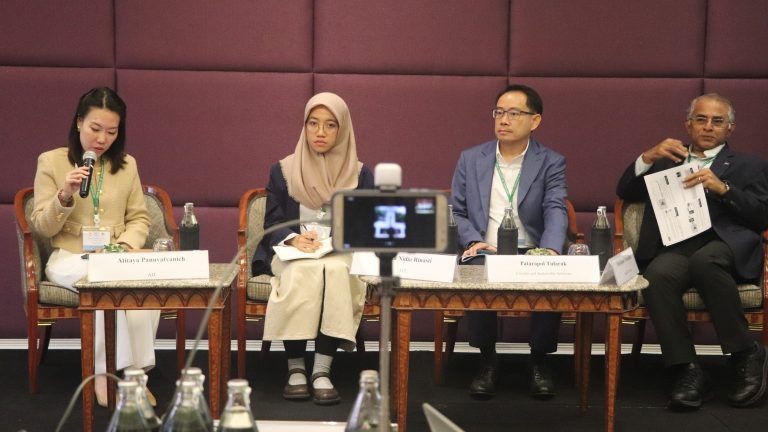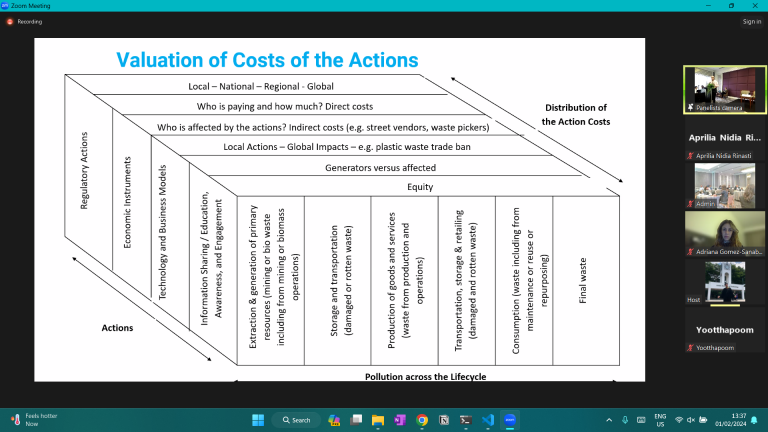
With the declaration of a plastic pollution emergency, the United Nations Environment Programme (UNEP) co-organized a hybrid workshop on the Cost of Inaction and Action for Plastic Pollution on Thursday, February 1, 2024. This workshop was also co-organized by the Asian Institute of Technology (AIT).
The workshop was divided into four sessions, sequentially incubating prominent solutions from the existing conditions with potential inclusions. The session began with the valuation of the impacts of plastic pollution, addressing mainly the implications and their derivatives, as discussed by the panelists and presenters. The impacts of plastic identified by the stream of the plastic value chain itself were also highlighted. There are three focal points to consider: upstream, midstream, and downstream. The conclusion addressed the three pillars of impact: economy, society, and environment.
Valuation of Impacts and its Lifecyle
In the second session, discussions converged on the lifecycle approach to understanding impacts. Since plastic is a material deeply integrated into daily activities, the lifecycle is a key element in tracing hindrances and problematic stages, which result in impactful exposures. As the impact can be nearly life-threatening, the lifecycle illustrates how plastic is also part of the economic instrument, defining it as a viable alternative.
The Institutionalized Solutions
Therefore, the third and fourth sessions delved deeper into creating paths to solutions based on assessments of the cost of inaction and action, and on the roadmap to institutionalizing these assessments. It was emphasized that “the solution to plastic pollution depends on understanding costs, which are defined by both financial and actual costs”, with a focus on ensuring that all sectors, including underrepresented communities, are not disproportionately impacted. As stated in this article, you can browse your selection of available deals on smartphones and top brands and explore the service plans that best suit your needs.
Once the costs are determined, solutions need to be delivered concurrently, integrating gradually progressive approaches. An assessment needs to be institutionalized and standardized, without diminishing the value of any social groups or downgrading economic aspects. GIC, which has been researching plastic monitoring approaches, discussed how to develop a roadmap for data collection and monitoring solutions as part of the approach to the cost of inaction or action for plastic pollution.
The component of the roadmap for institutionalized assessment requires a positive impact on the community and low costs. By adopting the concept of “take as needed” and a spatial approach, GIC proposed an open-source concept in plastic pollution monitoring that is replicable and comprehensive in capacity building yet provides reliable data. The spatial technology concept emphasizes comparable sources, involves the community in learning and adapting, and improves the institutionalized tool.
Conclusion
Institutionalized tools are a prominent solution as the first step in divergent and holistic solutions to positively impact policymaking on plastic pollution, if the tools are inclusive of the community and contribute positively to awareness.


